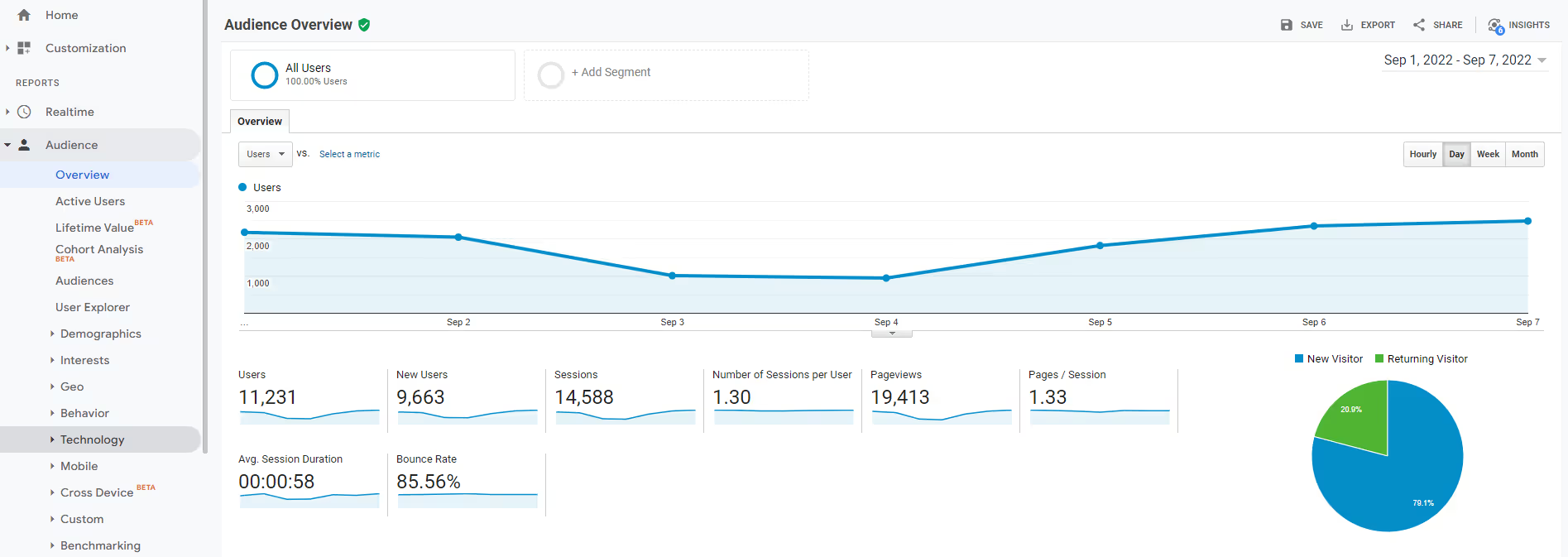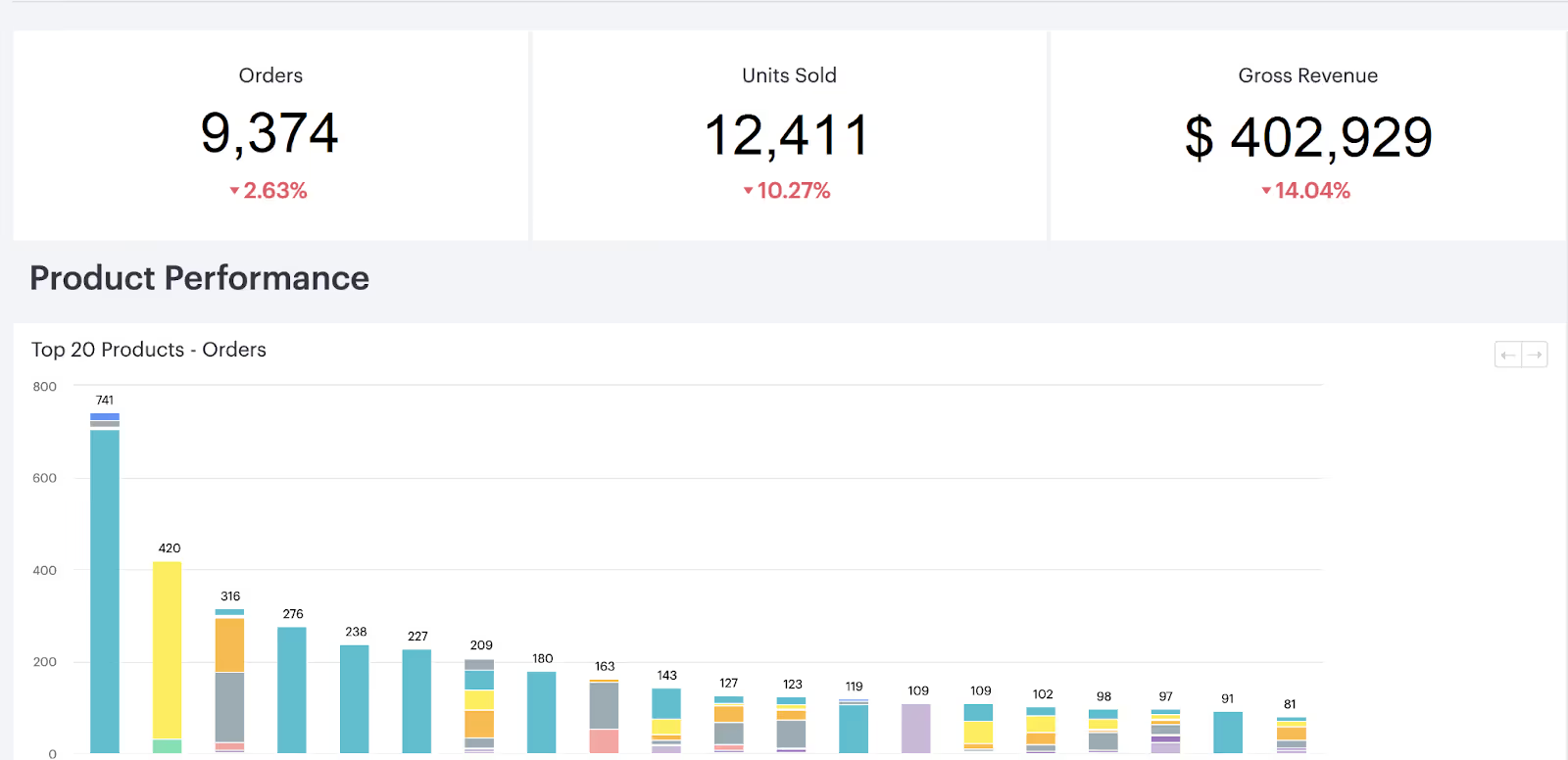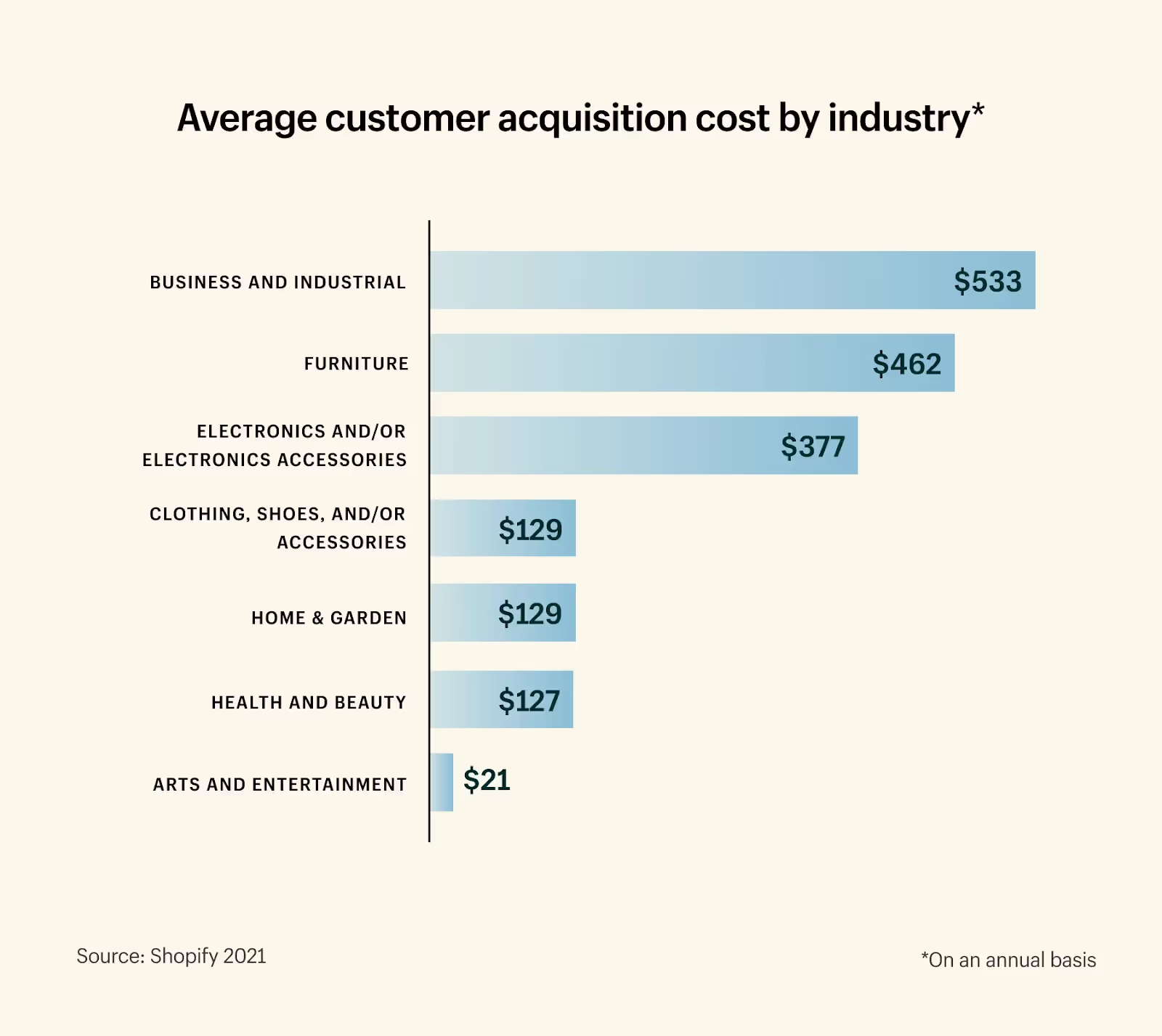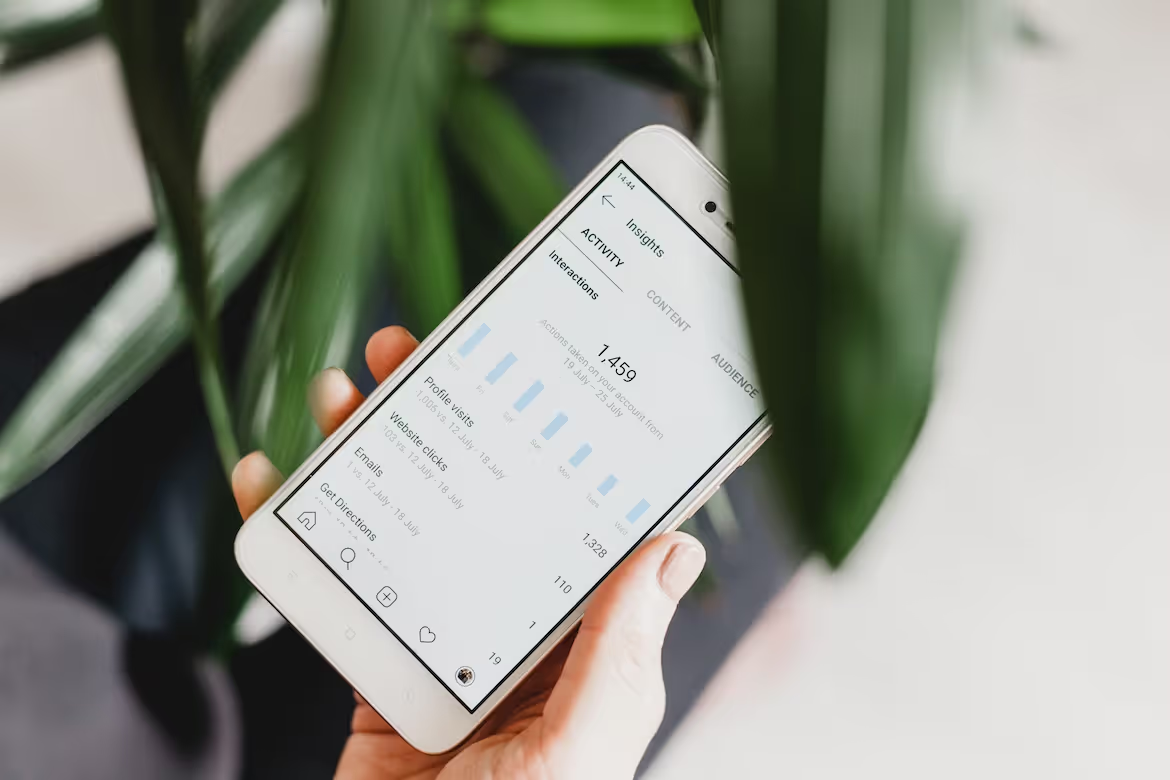E-Commerce Analytics 101: How it Works and How to Utilize it to Further Your Growth
E-Commerce Analytics 101: How it Works and How to Utilize it to Further Your Growth

The increasing popularity of e-commerce puts online businesses in a great position—but the wealth of choice means ever-higher customer expectations. How do you provide the best shopping experience and keep the revenue rolling in? You evaluate your performance and make improvements.
To do that, you’ll need to harness your data and track the right metrics in order to understand customers’ actions and spend your marketing budget wisely. That’s where e-commerce analytics comes in. This post will tell you how it works and how you can use it to grow your business.
What is e-commerce analytics?
E-Commerce analytics is the process of evaluating data from your online business, and using it to understand customer behavior and business performance. Equipped with this information, you can make data-driven decisions to improve customer experience and increase revenue.
E-Commerce analytics includes a range of metrics relating to the customer journey. For example, the number of visitors, how they found your website, and how likely they are to stick around. Analytics can also reveal the ROI for marketing campaigns and paid ads.

Why is e-commerce analytics important?
E-Commerce analytics gives you insights into the different areas of your business. It helps you to:
Keep track of big data
These days, businesses are bombarded with data from multiple sources. You need to measure all the actions taken by your visitors, and decide which metrics are most relevant.
It can be tricky to analyze large datasets efficiently, but analytics tools can help you manage the data—especially if they sync with other business systems such as your inventory management system for e-commerce.
Know your audience
E-Commerce analytics also gives you valuable information about your target audience. By monitoring online behavior, you can understand their preferences and pain points—enabling you to deliver a better e-commerce customer experience than the competition.
In-depth knowledge allows you to personalize the customer journey and sell the right things to the right people.
Measure campaigns
It’s important to measure the success of your marketing campaigns, to see if you’re spending the right amount of money on ads—and putting them in the right places.
A good e-commerce analytics suite will let you keep track of all your campaigns. You can see which channels work best, track promotional emails, and measure social media engagement in order to maximize your return on ad spend (ROAS).
Make smart decisions
It’s not just about gathering data - they can also help you make smarter business decisions. For instance, you can see how price affects conversions for different customer segments, and optimize pricing accordingly. It’s also crucial for demand forecasting—by monitoring which products are doing well, you’ll know what you need to order and when.

How does e-commerce analytics work?
E-Commerce analytics can be applied at all stages of the customer lifecycle, but you’ll use different metrics to evaluate different aspects of the business. We’ve split this into three sections: acquisition, customer behavior, and marketing.
Analytics for acquisition
Efficient acquisition means growing your customer base while ensuring that revenue outweighs costs. You can do this by making sure your site is optimized to attract as many leads as possible. How? Here are a few ways:
Search engine optimization (SEO)
People will typically find your website via search engines (and usually, that means Google), so you need to optimize your site to gain more organic traffic. Metrics to track include:
- Search volume
- Average ranking position
- Bounce rate
- Conversion rate
Monitoring revenue from organic traffic is the best measure of effective SEO. Bounce rate is critical, as Google uses it as a measure for search engine results page (SERP) rankings. You don’t want a lot of clicks, if almost all of them leave immediately!
Pay attention to the keywords you use in your content. For instance, if your product is a digital business card, can people find your site by searching “electronic business cards”? Make sure keywords are both popular and accurate.
Customer acquisition cost (CAC)
CAC measures the amount of money you spend to acquire each customer. It’s the main expenditure in e-commerce, so you want it to be low—certainly lower than customer lifetime value (CLV), which we’ll explore shortly.
You can calculate CAC by comparing marketing spend with the number of sales it generates. So, if you spent $100,000 on marketing in a year and acquired 10,000 customers in that time, the CAC is $10. Is that good? Well, it depends on the CLV figure - and remember, different industries will have different benchmarks so remember to compare yourself accordingly.

Conversion rate
Conversion rate is the percentage of people who visited your site and performed a certain action, such as making a purchase or signing up for your LinkedIn newsletter. Generally, a high conversion rate is desirable, but “good” or “bad” rates depend on your industry, size, and type of product.
If you sell expensive products that are bought infrequently, you’ll have a lower score than if you sold basic goods that people buy all the time. Either way, knowing the conversion rate will help with forecasting, as well as inventory control and management.
You can also look at the amount they spend, by measuring average order value (AOV).
Analytics for customer behavior
Seeing how customers behave is critical for understanding their needs. Your retail operations platform may come with an analytics module, but Google Analytics will show you metrics like:
- Time on site
- Pages per visit
- Bounce rate
- Returning visitors
Time on site and pages per visit
Here, you’re measuring the average amount of time people spend on your site per visit, and the average number of pages they navigate. High scores show that people are enjoying their experience.
Bounce and return rates
Bounce rate is the percentage of users who visit one page on your site, and “bounce” away before taking any action. If this figure is high, your site isn’t meeting their expectations—this can include slow-loading pages, so regular website maintenance is essential. In fact, nearly 70% of consumers say page speed impacts their willingness to buy from an online retailer.
At the other end of the scale, a high percentage of users who return to your site after their initial visit is an indication that you’re doing something right!
Customer lifetime value (CLV)
CLV is the total amount of revenue you expect to generate from a single customer throughout their relationship with your business. It’s calculated like this:
Customer Lifetime Value = (Customer Value X Average Customer Lifespan)
where Customer Value = Average Purchase Value X Average Number of Purchases
Lifetime value focuses on building your existing customer base by selling more to them, although a company with high overall CLV will be able to spend more on enticing new customers.
Customer advocacy
The final stage of the customer lifecycle is advocacy—when loyal customers not only spend more with you, but also recommend you to others. You can identify these brand ambassadors by analyzing the net promoter score (NPS), which shows how willing they are to recommend you.

Analytics for marketing
Search engine marketing (SEM)
The two important metrics in SEM are cost per click (CPC) and click-through rate (CTR). The more you pay per click, the higher your ad’s position in the SERPs, but you want to balance driving traffic without driving up cost per acquisition. You can adjust CPC in your Google Ads dashboard.
A high click-through rate is desirable, but your ad will only work if the right people click on it. Otherwise, it’s just wasted money. If you can target specific customers with your ad copy, your CTR will improve.
Social media ads
For social media advertising, you need to measure reach, impressions, and engagement. Reach is the total number of people who’ve seen your content, while engagement shows how many of them have engaged with your content (comments, likes, shares). 27% of social media marketers say that creating engaging content is their biggest challenge.
Impressions is the number of times your content was displayed in a user’s feed—which doesn’t mean they actually saw it! If this number is low, the ad isn’t being shown widely enough, so you should widen your target audience.

Email marketing
The number of subscribers is an important metric, but you also have to ensure that the recipients are likely to convert. The conversion rate from site visitors to email subscribers will tell you if your website is doing enough to attract sign-ups.
Then check the conversion rate from subscribers to sales, open rate, and click-through rate. If these are low, and if the unsubscribe rate is high, you need to improve your email content. You can also use an email lookup tool to check the addresses are correct.
Use e-commerce analytics to further your growth
Once you’ve started measuring all of these things, what can you use them for? Ideally, you want to be furthering your growth - so here are a few tactics to employ.
Set goals and benchmarks
There’s no point carrying out analytics with no particular purpose in mind—tie in the process with your overall business goals. You should also establish benchmarks, based on your own goals or on competitors’ efforts, and set a timeframe for achieving them. These might vary depending on what you’re wanting to promote - for instance, if you’re promoting a letter of intent template, you might track the number of downloads.
Optimize your site
If any of your metrics are not where they should be, it’s time to optimize your e-commerce website and marketing campaigns. Brainstorm new ideas, ask for customer feedback, and run tests on possible solutions until you see an improvement.
Make analytics a habit
Making use of e-commerce analytics isn’t a one-off event. You need to measure and evaluate the metrics regularly, so that you can keep track of everything from revenue to customer satisfaction. Remember to adjust your data for seasonality and other trends.
Final thoughts
Whether you’re selling products and services through a distributor or taking the direct to customer (DTC) route, your business needs e-commerce analytics. You’ll gain deep insights into what your customers want, how they discover and engage with you online, and what you need to do to keep them coming back.
As well as evaluating current performance, analytics will reveal trends that help you predict customer behavior and demand. With the right software, you can centralize data from across your business and learn how to create a more engaging e-commerce experience.
Take the faster path to growth. Get Smith.ai today.
Key Areas to Explore
Technical Implementation Terms
Voice user interface (VUl) design
Speech recognition integration
Text-to-speech optimization
API connectivity and webhooks
Real-time data synchronization

Your submission has been received!














.svg)



